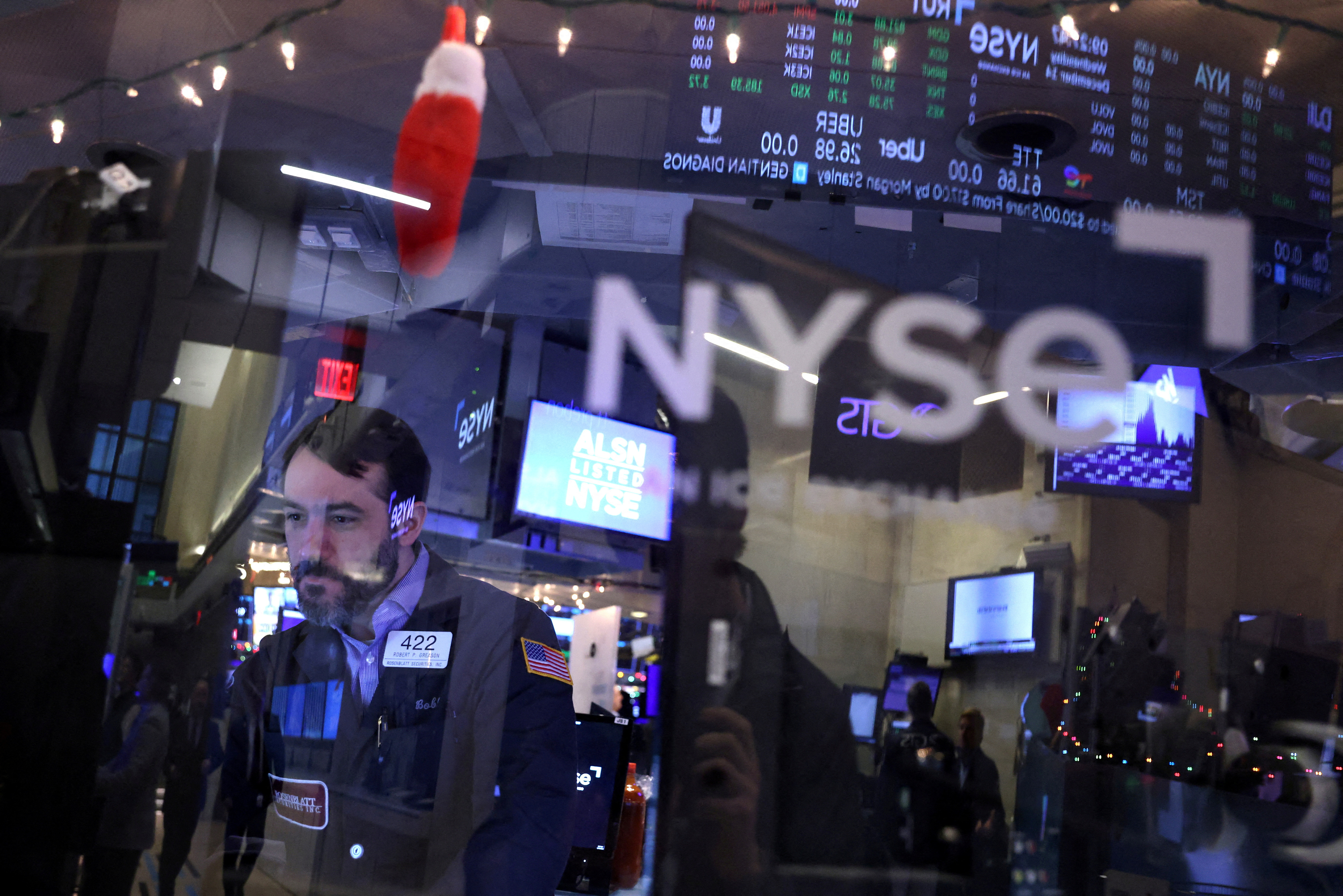
Wall Street was pulled lower by losses in growth and healthcare shares on the final trading day of a tough year, which was marked by aggressive interest-rate hikes to curb inflation, the Russia-Ukraine war and recession fears.
The three main indexes are set for their first annual drop after three straight years of gains as an era of loose monetary policy came to an end following the fastest pace of rate hikes by the Federal Reserve since the 1980s.
The benchmark S&P 500 (.SPX) has shed 20% this year and the tech-heavy Nasdaq (.IXIC) is down 34%, putting them on track for their biggest yearly declines since the 2008 financial crisis, largely driven by a rout in technology shares.
Most rate-sensitive technology and growth stocks such as Apple Inc (AAPL.O), Amazon.com Inc (AMZN.O), Alphabet Inc (GOOGL.O) and Meta Platforms Inc (META.O) fell between 0.7% and 1.4% on Friday, as U.S. Treasury yields rose.
The losses made communication services (.SPLRCL), technology (.SPLRCT) and the retail index (.SPXRT) among the top decliners on the S&P 500, with the three sectors shedding between 0.9% and 1.2%.
Healthcare (.SPXHC) shares fell 1% and were also a major drag on the S&P 500 and the Dow (.DJI), while the energy (.SPNY) sector was the only gainer, with a marginal 0.1% rise.
The tech sector has been pummeled this year with declines of 29%, while energy (.SPNY) has recorded stellar annual gains of 58% due to a surge in oil prices.
Growth stocks have been under pressure from rising yields for much of 2022 and have underperformed their economically-linked value peers in a reversal of a trend that has lasted for much of the past decade.
The S&P 500 growth index (.IGX) is down about 30.5% this year, while the value index (.IVX) has fallen just 7.7%, with investors preferring high dividend-yielding sectors with steady earnings such as energy.
“We could see the next few years where value does better than growth,” said Paul Nolte, portfolio manager at Kingsview Asset Management in Chicago.
“A lot of that is just a rotation from very expensive stocks to those that are a little bit cheaper and you see better growth opportunities in some of those other sectors.”
Focus has now shifted to the corporate earnings outlook in 2023 as investors grow increasingly concerned about the likelihood of a sharp economic downturn due to the rate hikes.
Wall Street’s main indexes closed higher on Thursday after unemployment data signaled the Fed’s policy tightening was starting to take a toll on the U.S. labor market.
Still, signs of resilience in the American economy have fueled concerns that the rates could stay higher for longer, though easing inflationary pressures have raised hopes of dialed-down rate hikes.
Money market participants see 65% odds of a 25-basis-point hike in the Fed’s February meeting, with rates expected to peak at 4.97% by the middle of next year.
At 11:51 a.m. ET, the Dow Jones Industrial Average (.DJI) was down 237.34 points, or 0.71%, at 32,983.46, the S&P 500 (.SPX) was down 30.84 points, or 0.80%, at 3,818.44, and the Nasdaq Composite (.IXIC) was down 93.36 points, or 0.89%, at 10,384.73.
U.S.-listed shares of Shaw Communications Inc jumped 9.4% after Canada’s antitrust tribunal approved rival Rogers Communications Inc’s (RCIb.TO) C$20 billion ($14.77 billion) bid for the telecom company.
Declining issues outnumbered advancers for a 2.51-to-1 ratio on the NYSE and for a 1.73-to-1 ratio on the Nasdaq.
The S&P index recorded no new 52-week highs and no new lows, while the Nasdaq recorded 45 new highs and 79 new lows.

